How can architecture be a force for good in our ever-changing world? During Future Fest, we’ll pose this question to some of the world’s best architects. Launching in September, our three-week-long virtual event will be 100% free to attend. Register here!
Whether through a single, elegant detail or an entire building mass, exceptional design elevates architecture above commodity, and few places showcase this practice like South Korea. Reinterpreting historic building methods, the country has become a testing ground for formal expression and spatial multiplicity.
Nowhere is this more evident than South Korea’s roofscapes. The product of increasingly dense urbanization and rich cultural tradition, the country’s modern roofs recall the outstanding qualities of Korean Hanok houses. These traditional homes were built with large, heavy roofs and exposed structures that created high spaces and cavernous atmospheres. Today, these qualities are being explored through thickened roofs that combine program and landscape.
Framing the context while building upon it, South Korean roofscapes subvert expectations. The following projects represent this condition across multiple programs and scales. Ranging from residential projects to large masterplans, each design examines the hierarchical and social potential of roofscapes. Connecting the fabric of one of the most highly urbanized countries in the world, the projects create powerful experiences throughout building envelopes.
Collectively, they reveal how the architecture of South Korea is challenging convention and rethinking the fifth façade.
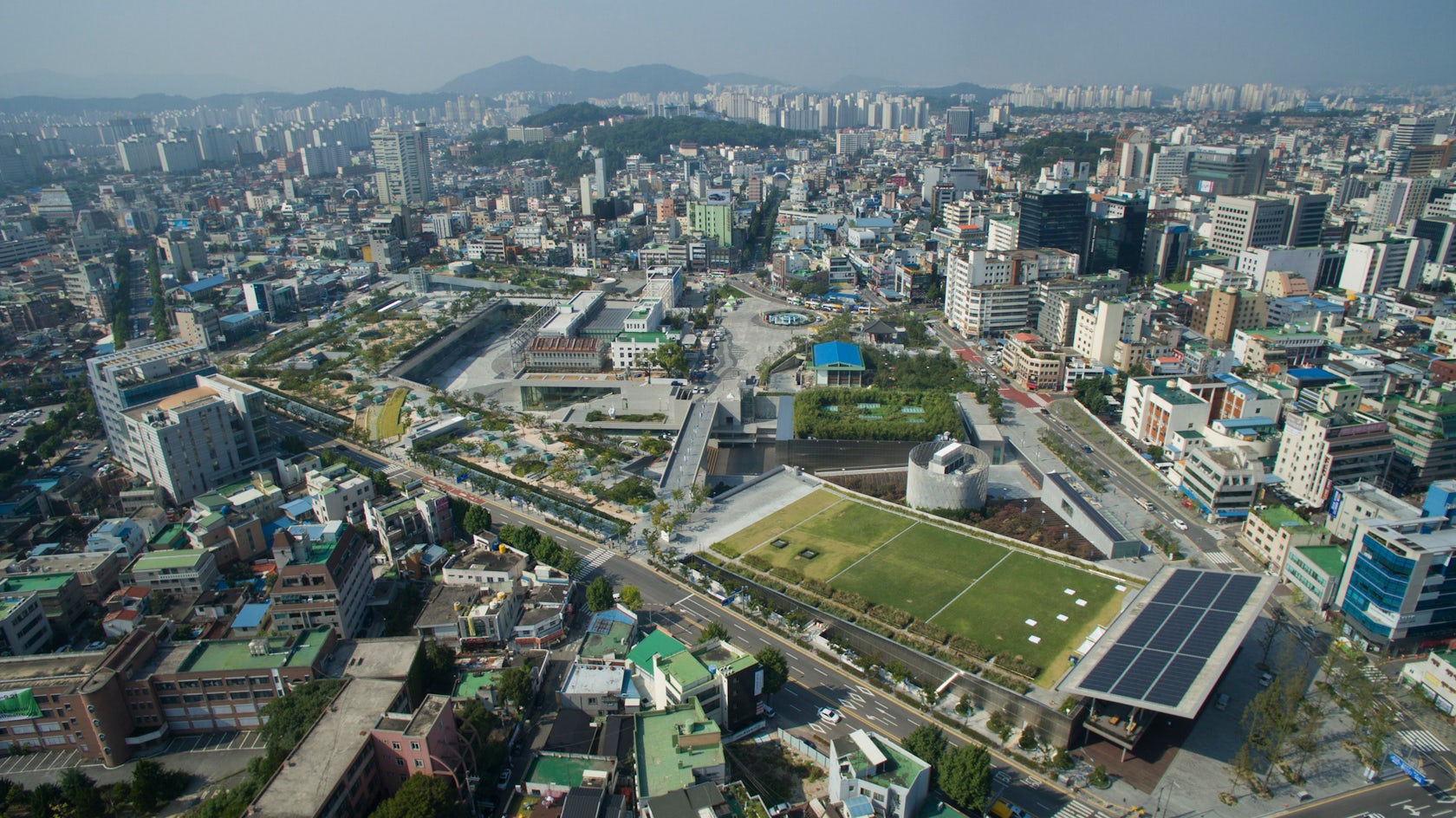
© Kyu Sung Woo Architects
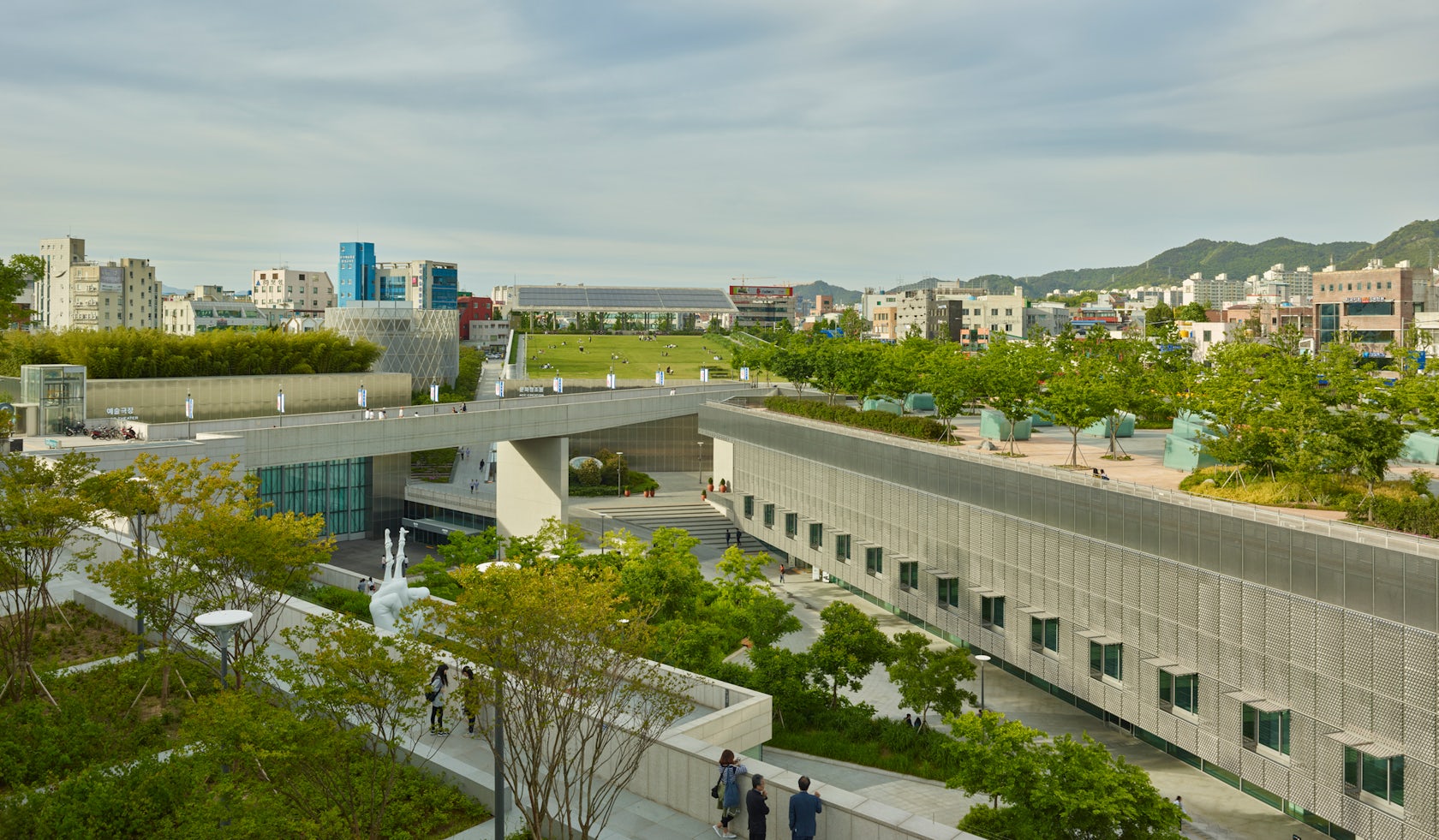
© Kyu Sung Woo Architects
Asia Culture Centerby Kyu Sung Woo Architects, Gwangju, South Korea
Located at a historic site in Gwangju, this cultural center was designed as a memorial and a Citizen’s Park. Extending the city fabric into the site, the project links together five cultural programs and a green roof that provides a cool, calm place in the city.

© Steven Holl Architects
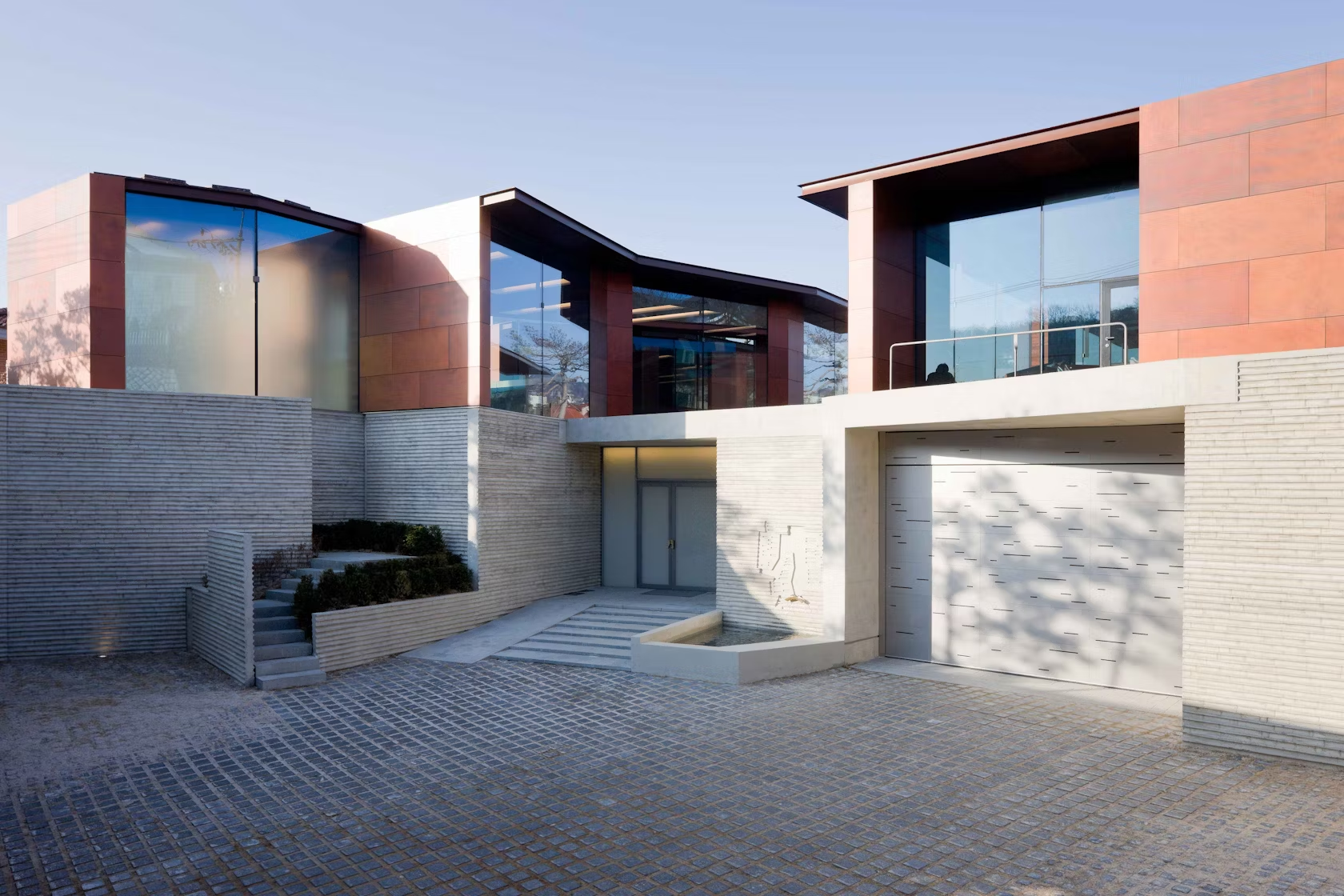
© Steven Holl Architects
Daeyang Gallery and House by Steven Holl Architects, Seoul, South Korea
Steven Holl’s design for the Daeyang Gallery and House was created around “the architectonics of music.” Inspired by a sketch from the composer Istvan Anhalt, the project was designed around three pavilions: one event space, one entry and one residence. The roof establishes a plane of reference from which the pavilions emerge, allowing views from within that are framed by the reflecting pool.
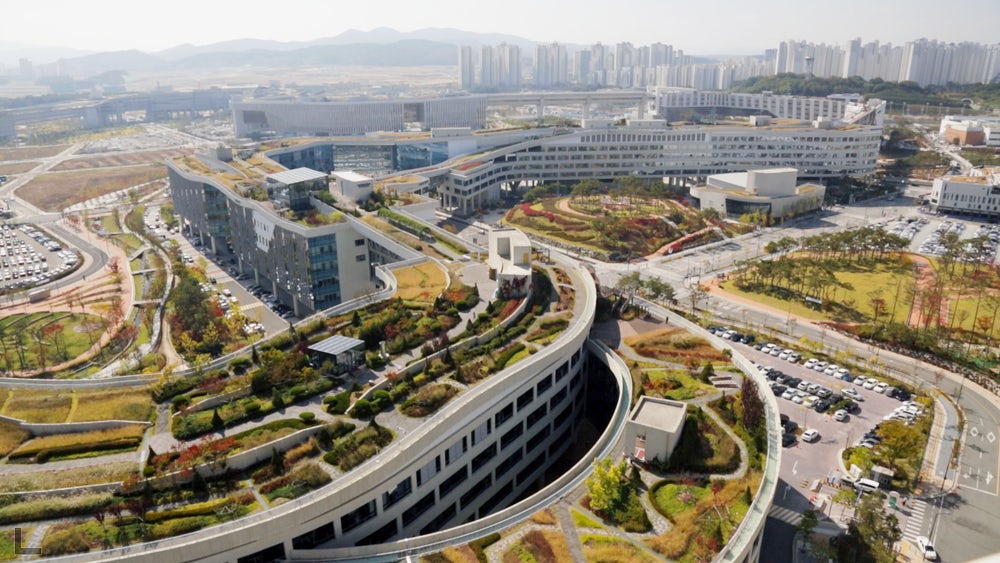
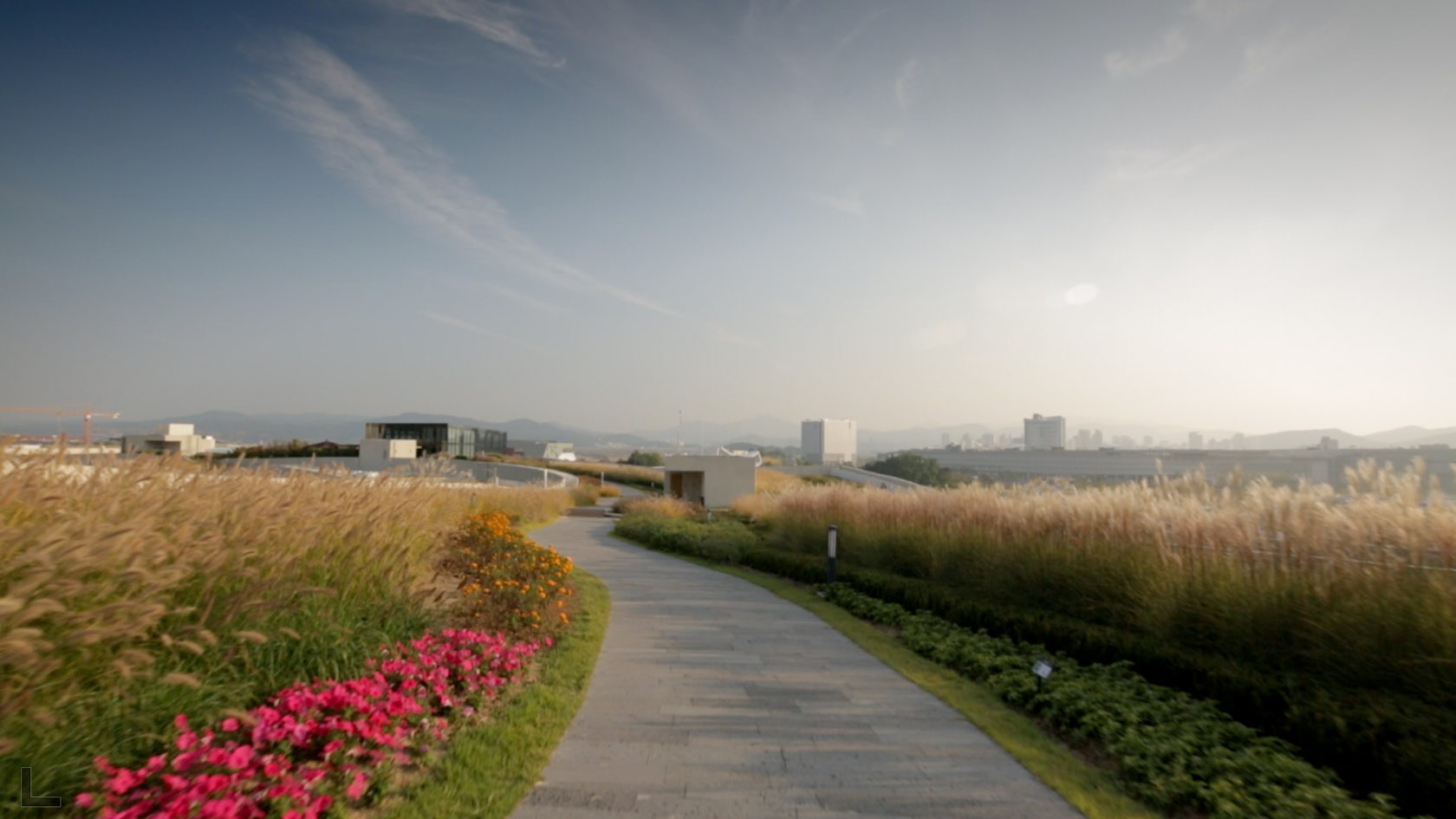
© Balmori Associates
Sejong New Government City Master Plan by Balmori Associates, Sejong City, South Korea
Created with an approach to urban planning that starts with landscape architecture, the Sejong Master Plan will include space for 36 ministries and institutions. Designed with a continuous linear roof park that connects the programs together, the project aims to encourage communication among the ministries.

© Kyungsub Shin
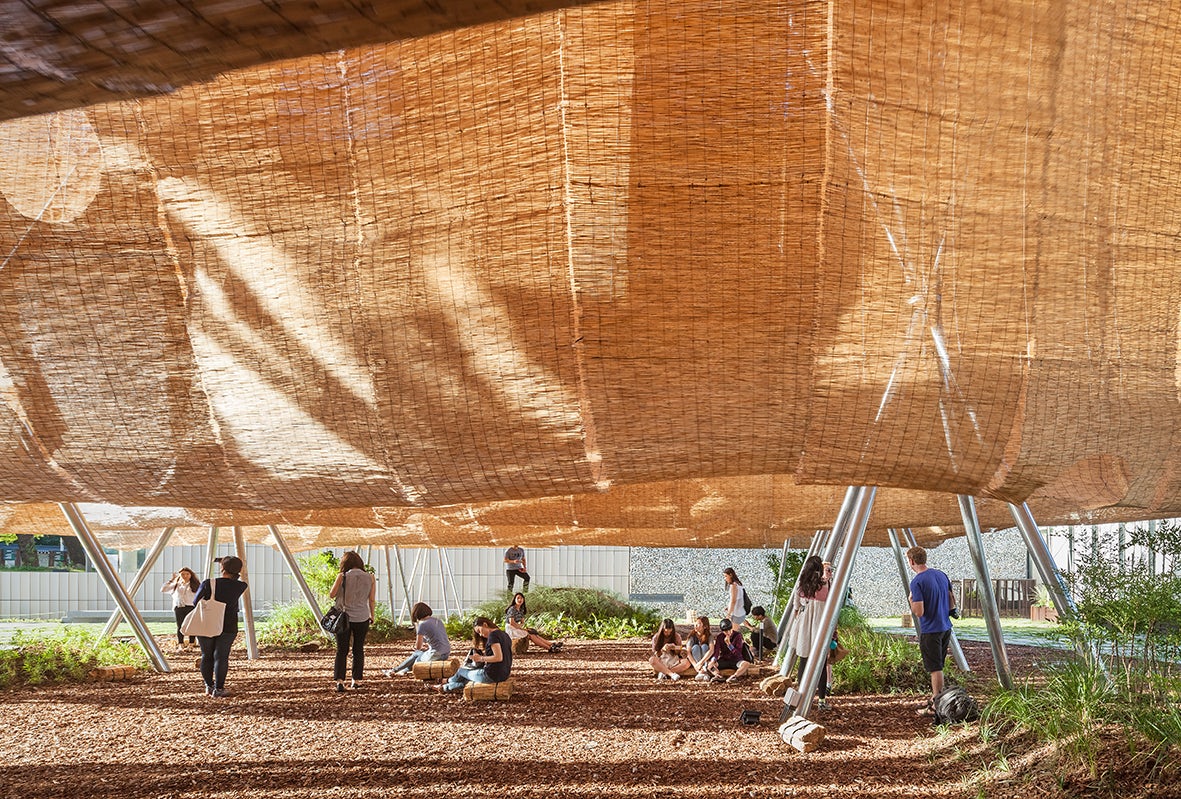
© Kyungsub Shin
Roof Sentiment by SoA(Society of Architecture), Seoul, South Korea
While not a roofscape in the normal sense, Roof Sentiment explores South Korea’s roof heritage through an installation across from Gyeongbokgung Palace. As a “wrinkle roof” for uncovering people’s feelings, the project heightens awareness of breeze and space through an undulating reed blind surface.
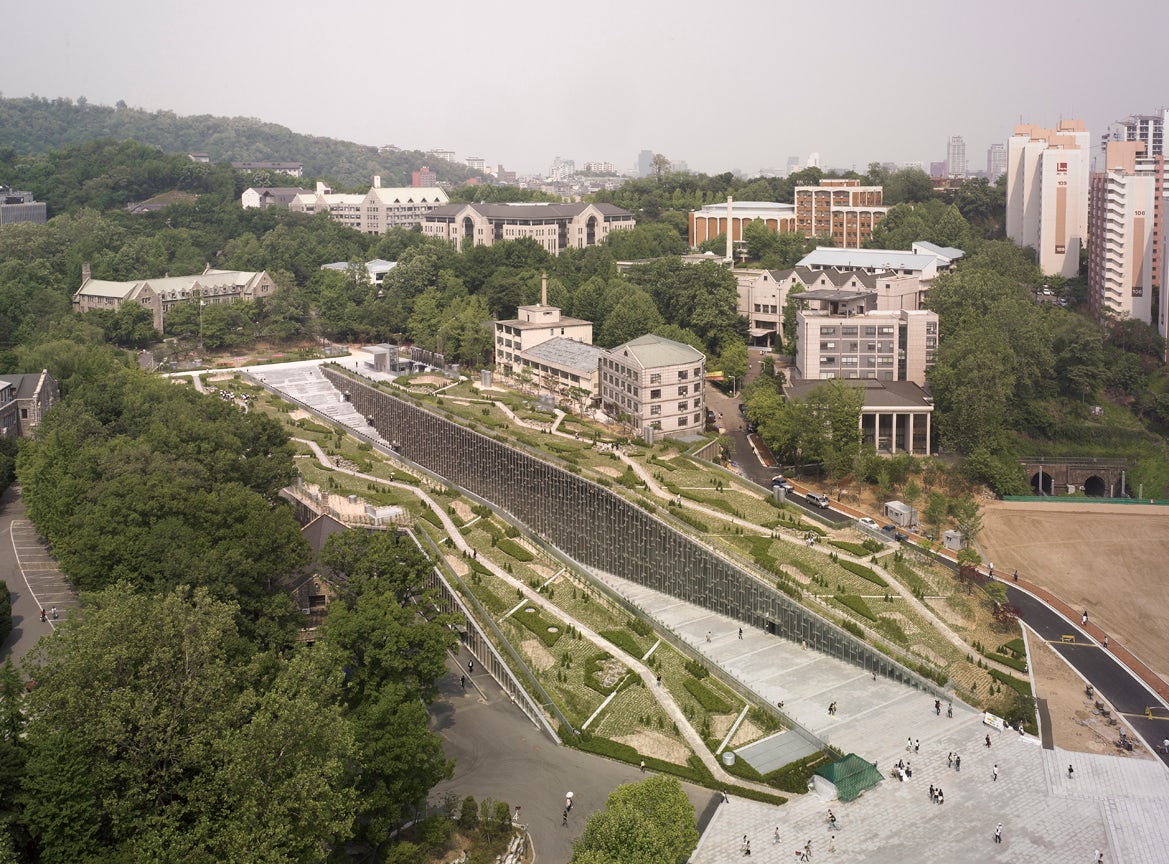
© Dominique Perrault Architecte
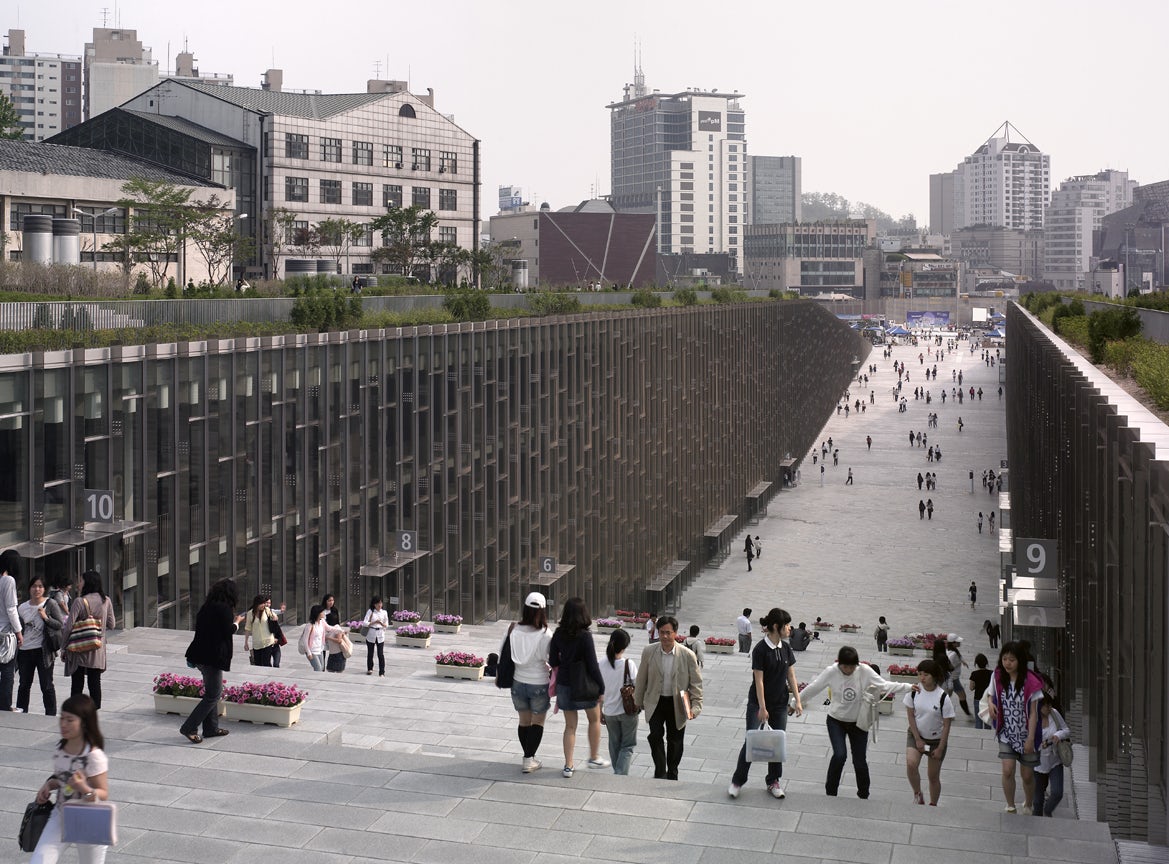
© Dominique Perrault Architecte
Ewha Womans University by Dominique Perrault Architecte, Seoul, South Korea
Dominique Perrault’s Ewha Womans University design was conceived as a landscape amidst Seoul’s university area. A large valley was formed into the ground with a gentle slope, creating a continuous roofscape that connects across the campus.
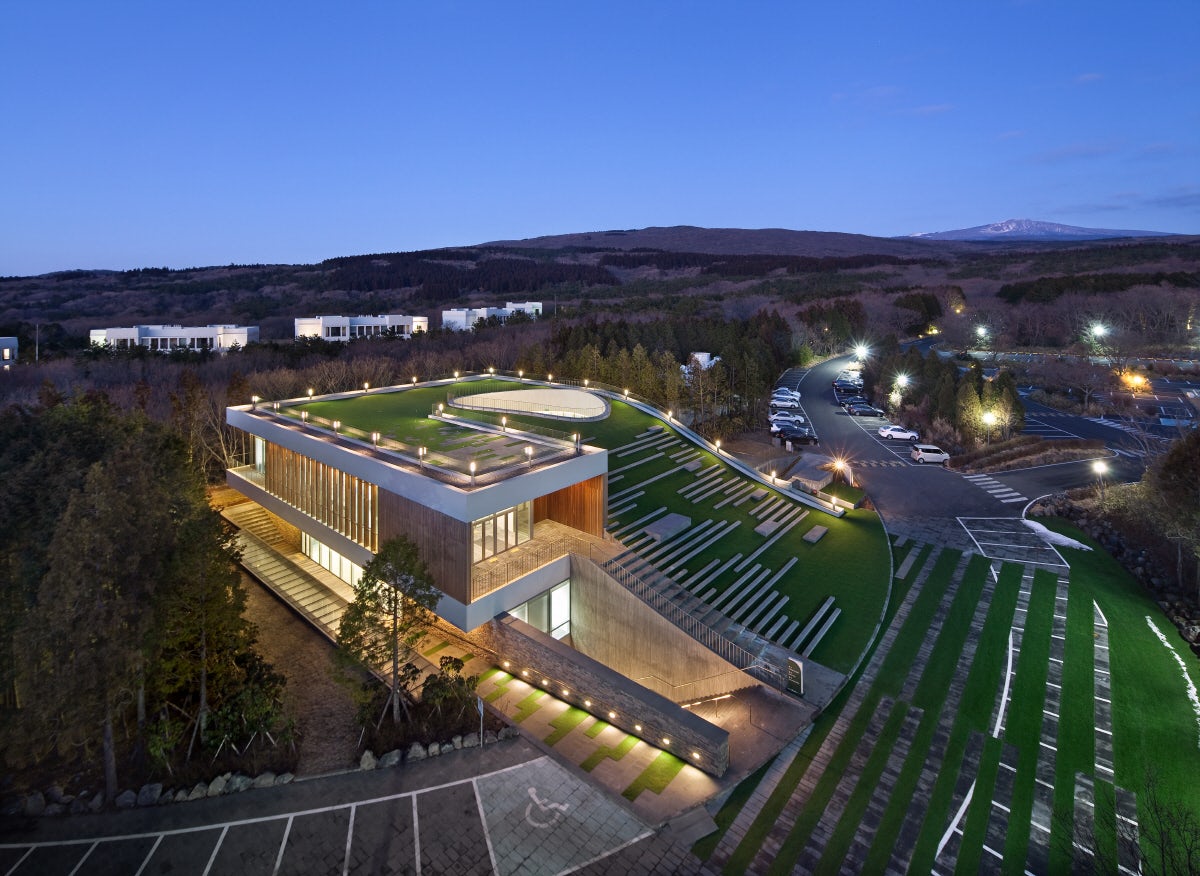
© D.LIM Architects
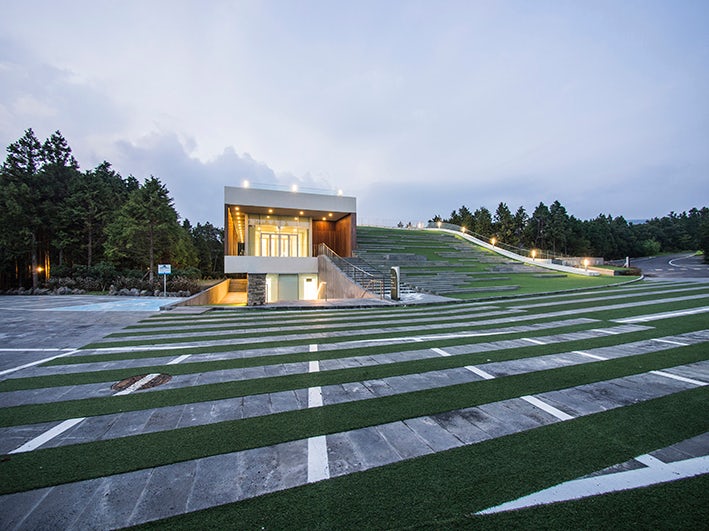
© D.LIM Architects
CJ Nine Bridges “The Forum” by D.LIM Architects, Seogwipo-si, South Korea
As a multipurpose facility, “The Forum” is located at a golf club on Jeju island. Built to avoid disrupting views of the surrounding forest and natural landscape, more than half of the building volume was placed below ground with a sloping roof garden and amphitheater on top.
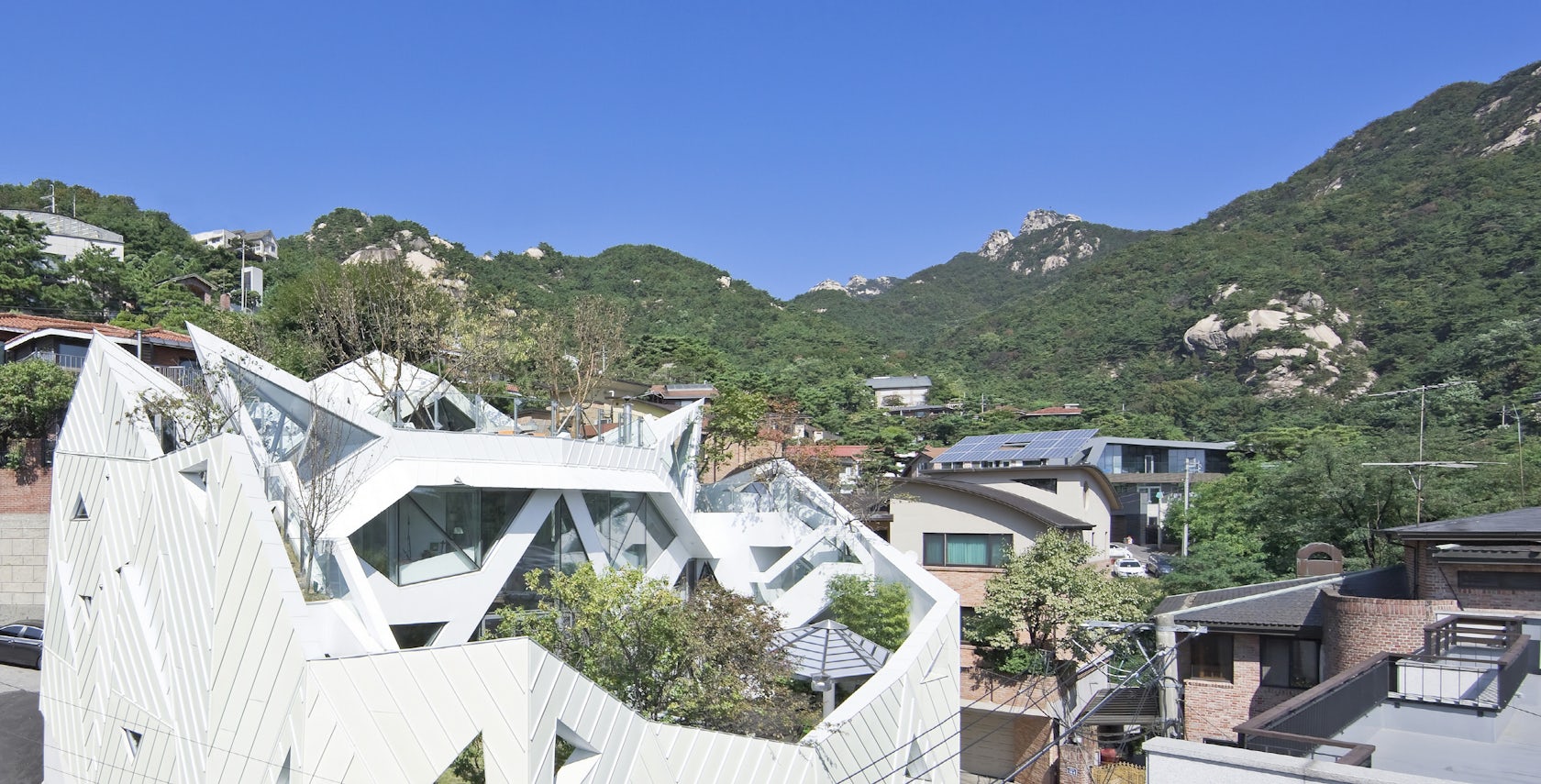
© IROJE KHM Architects
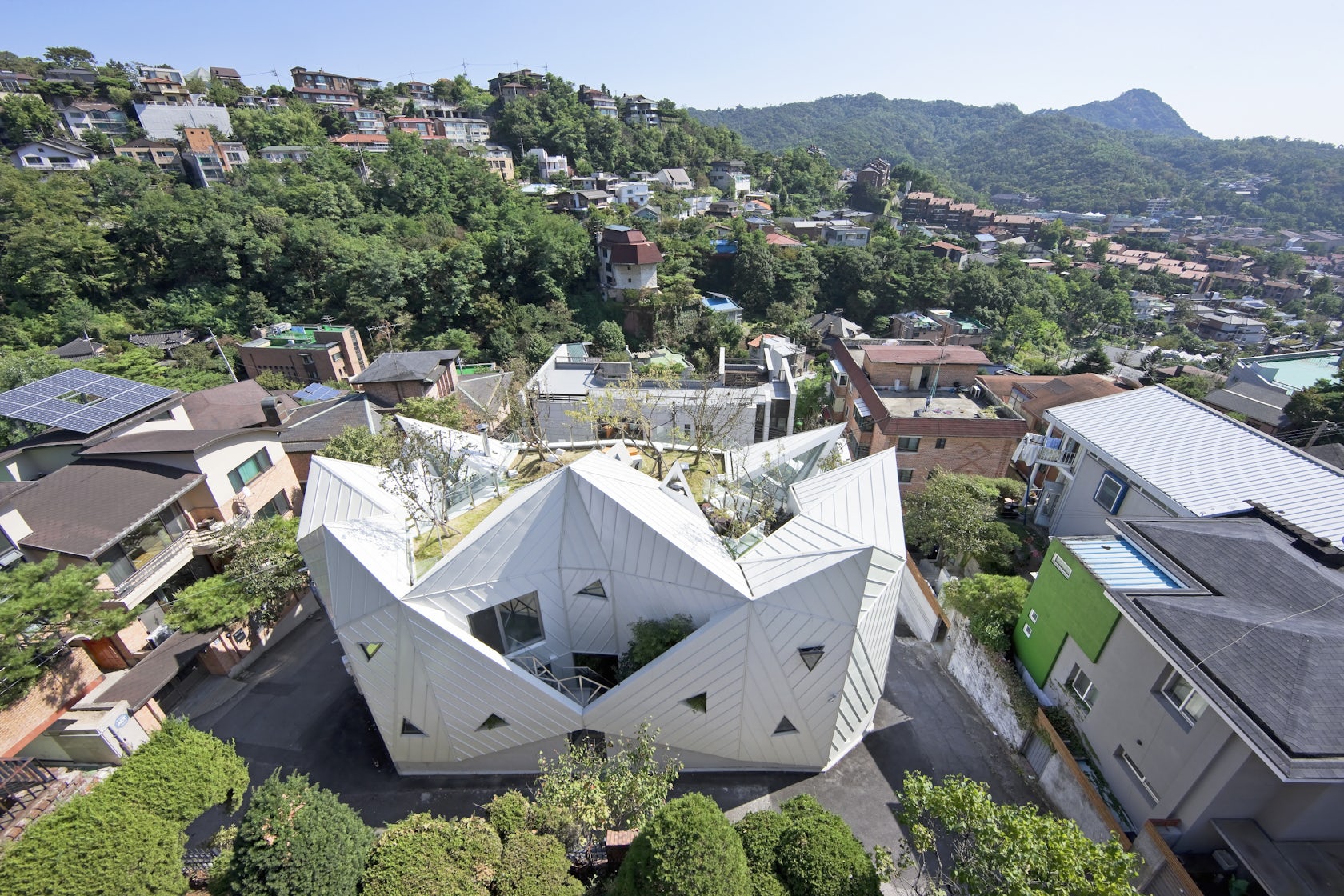
© IROJE KHM Architects
HWA HUN by IROJE KHM Architects, South Korea
The Blooming House project was inspired by the idea of living in nature. As a topographic architecture, the project was formed as an “architectural hill” with an elevated roof garden that overlooks the mountain context.

© Kevin Scott Photography
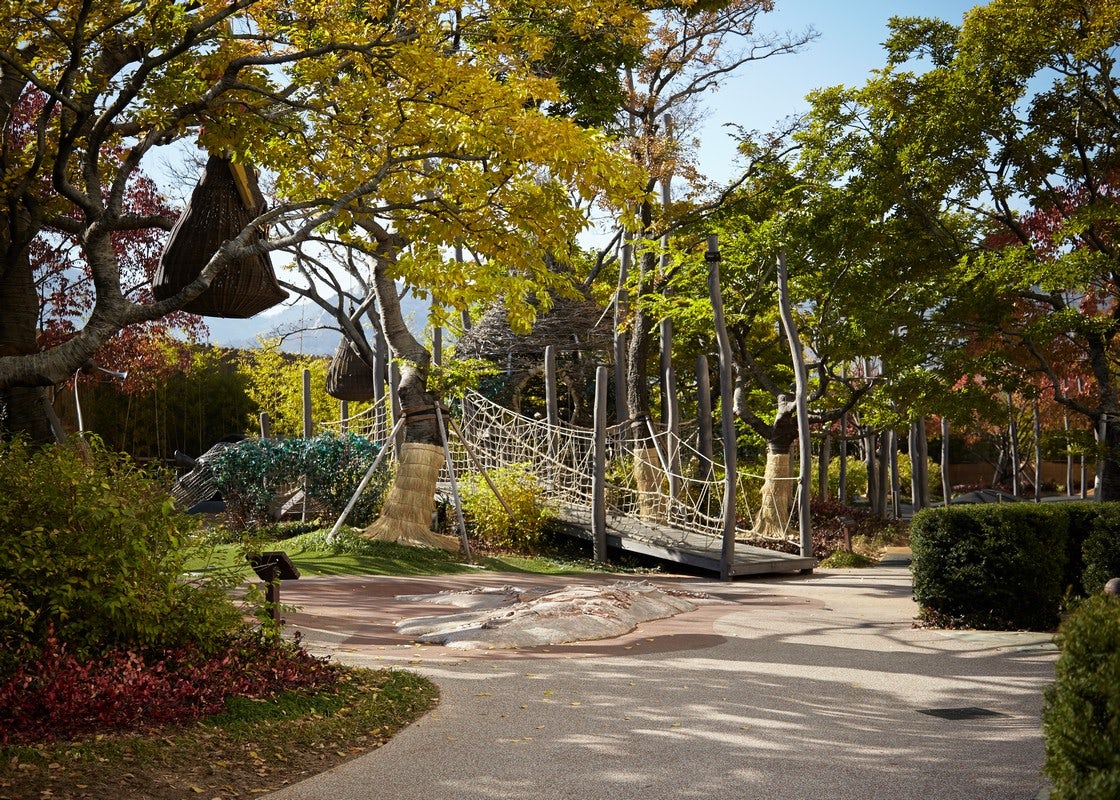
Secret Garden by Olson Kundig, Uijeongbu-si, South Korea
Olson Kundig’s Secret Garden was designed as a 20,000-square-foot park for children and families. Designed atop a shopping center, the project was made with native vegetation and a series of “secret” discoveries that include a maze, tree houses and an art installation.
How can architecture be a force for good in our ever-changing world? During Future Fest, we’ll pose this question to some of the world’s best architects. Launching in September, our three-week-long virtual event will be 100% free to attend. Register here!




